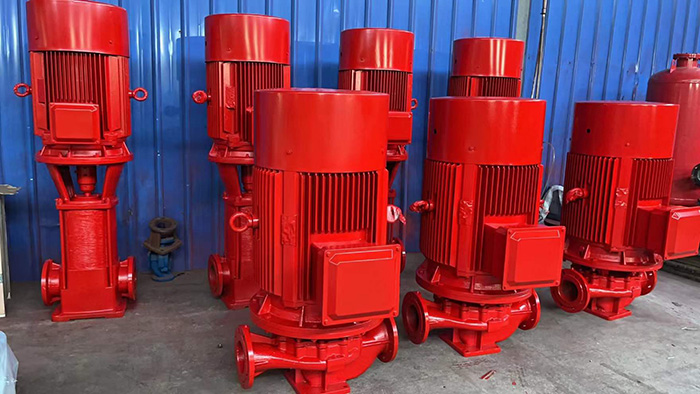Fire pumps are critical components of fire protection systems, ensuring the availability of water supply during emergencies. To guarantee their reliability and effectiveness, regular maintenance and proper care are essential. In this article, we will discuss the importance of maintaining fire pumps in daily life and highlight essential steps to ensure their optimal performance.
1. Regular Inspections: Conducting routine inspections is crucial to identify any potential issues or signs of wear. Inspect the fire pump and its components, including the motor, controller, valves, and piping system. Look for leaks, corrosion, loose connections, or any visible damage. Early detection of problems allows for timely repairs and ensures the pump is ready for action when needed.
2. Testing and Exercising: Regularly test and exercise the fire pump to ensure its operational readiness. This involves running the pump at full capacity and checking its performance, pressure, and flow rate. Testing should be done in accordance with relevant standards and local regulations. Exercising the pump helps identify any operational issues and ensures that it functions optimally during emergencies.
3. Lubrication: Proper lubrication is essential for the smooth operation of the fire pump. Follow the manufacturer's guidelines for lubrication intervals and use the recommended lubricants. Insufficient lubrication can lead to increased friction, overheating, and premature failure. Regularly check and replenish lubricants as needed.
4. Cleanliness: Keep the fire pump and its surroundings clean and free from debris or obstructions. Regularly inspect and clean the pump's impellers, casings, and strainers to prevent clogging and ensure optimal performance. A clean pump operates efficiently and minimizes the risk of malfunctions during critical situations.
5. Maintenance Records: Maintain detailed records of all maintenance activities, including inspections, tests, repairs, and replacements. This documentation helps track the pump's history, identify recurring issues, and ensure compliance with regulatory requirements. It also serves as a valuable reference for future maintenance and troubleshooting.
6. Professional Servicing: Engage qualified professionals for periodic servicing and maintenance of your fire pump. They have the expertise and knowledge to perform in-depth inspections, conduct necessary repairs, and ensure compliance with safety standards. Professional servicing helps identify hidden issues and extends the lifespan of the fire pump.
7. Training and Awareness: Educate building occupants and staff on fire safety procedures and the importance of fire pump maintenance. Conduct regular fire drills to familiarize everyone with evacuation protocols and the operation of fire protection systems. Increased awareness and preparedness can significantly minimize the impact of fire emergencies.
8. Emergency Power Supply: Ensure that the fire pump has a reliable emergency power supply, such as a backup generator or uninterruptible power supply (UPS). This ensures that the pump remains operational even during power outages, guaranteeing continuous water supply for firefighting purposes.
Regular maintenance and proper care of fire pumps are vital for the safety of buildings and occupants. By following these essential steps, you can ensure the optimal performance and reliability of your fire pump, providing peace of mind in the face of potential fire emergencies. Remember, a well-maintained fire pump can be a lifesaver when every second counts.
